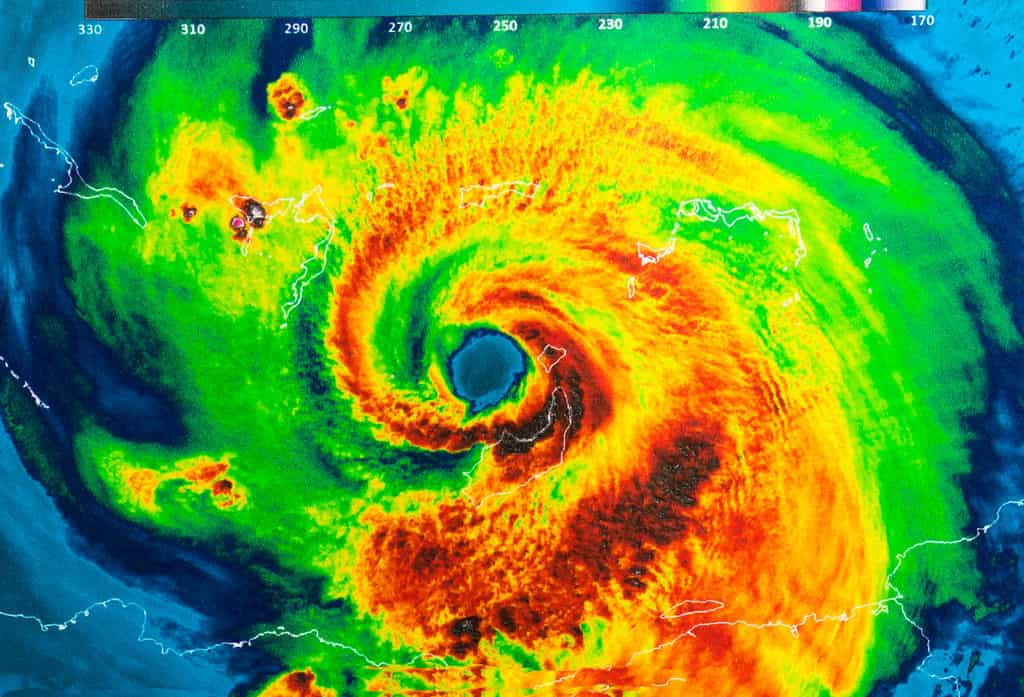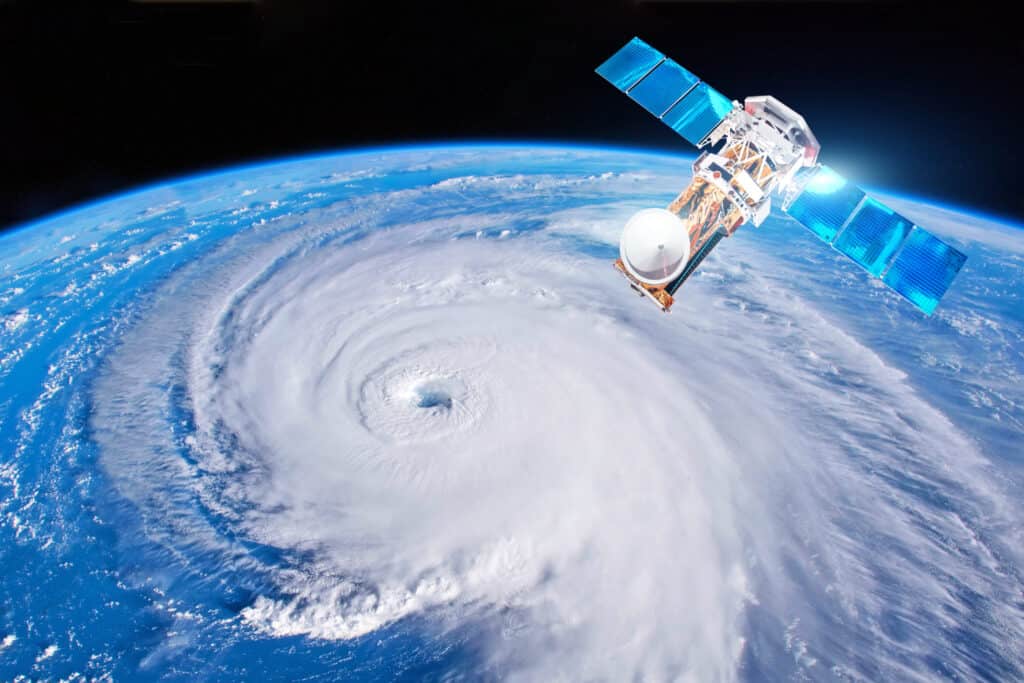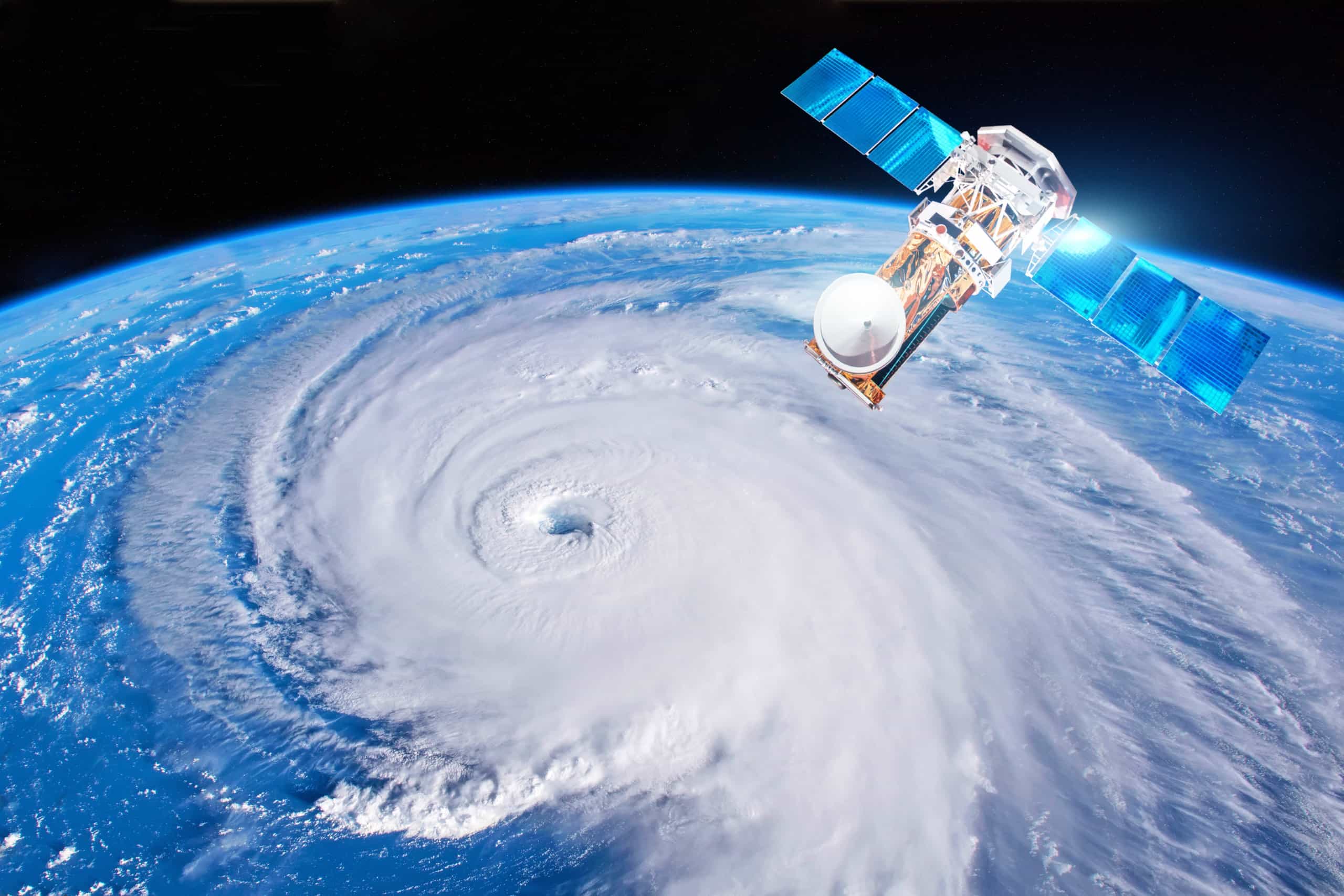Introduction
Hurricanes, also known as tropical cyclones, are common near the coastal United States. Hurricanes are a type of natural disaster characterized by high wind speeds and storm surges. This phenomenon can result in catastrophic damage, which can leave some communities uninhabitable for many months. Furthermore, a rise in global temperatures can lead to increased intensity of hurricanes. Discover when the 2023 Pacific hurricane season begins and find out why hurricanes can devastate millions.
How do Hurricanes Form?

The 2023 Pacific Hurricane Season has a 60% “below normal forecast.”
©Vikks/Shutterstock.com
Hurricane formation requires a set of specific circumstances to form. In most cases, hurricanes begin as tropical waves. Tropical waves are elongated areas characterized by low pressure that moves east to west. In addition, hurricanes need a minimum water temperature of 78ºF over a minimum depth of 164 feet. Hurricane season lasts from summer to fall. These periods feature water temperatures at their warmest. Warm water is necessary for hurricane formation.
Thunderstorms often go hand in hand with hurricane activity. Storm activity allows for heat from the ocean to turn into fuel for the hurricane. A hurricane also needs low wind shear. Low wind shear that measures 10 knots or lower aids in hurricane formation. If the wind around a hurricane is strong, it disrupts the storm’s structure. Disruption in a hurricane’s structure weakens the hurricane.
While all these factors are necessary for hurricane formation, their combination does not mean a hurricane will form. Hurricanes begin as weather systems; they are storms that form over the ocean. As a storm moves west, it captures warm ocean air, which strengthens it. When warm ocean air rises into the storm, a low-pressure area is created underneath the storm. A positive feedback loop results: the low-pressure area allows for the storm to absorb more warm air. Thus, the storm gains more and more strength.
As a result, warm ocean air absorbed by the storm will rise and then cool. Cool air forms clouds in which water vapor condenses. Condensed water vapor creates water droplets, and the process of condensation releases heat, which the storm can use as fuel. After these steps occur, a massive and powerful storm has been created. These storms are officially hurricanes once wind speeds exceed 74 miles per hour. If these storms have wind speeds between 39 and 73 miles per hour, they are called tropical storms. Wind speeds below 39 miles per hour create tropical depressions.
After formation, hurricanes take on several characteristics. Hurricanes are clouds and thunderstorms that rotate over tropical or subtropical waters. The rotation pattern of a hurricane is “closed circulation.” Something interesting about a hurricane’s rotation is that it varies by location. In the Northern Hemisphere, hurricanes rotate counterclockwise. On the other hand, the Southern Hemisphere experiences clockwise rotation patterns in hurricanes.
How is Hurricane Severity Measured?

Hurricanes feature categorization from 1 to 5.
©Michael Grachikov/Shutterstock.com
Hurricanes are measured on a scale of 1 to 5 by the Saffir-Simpson Hurricane Wind Scale. However, this scale only measures a hurricane’s maximum sustained wind speed. Many people without knowledge of hurricanes misinterpret this scale; they believe it measures overall intensity related to storm surges or flooding. However, the scale only takes wind speed into account. Hurricanes with a scale of 3 or greater are considered major hurricanes. Reference the table below to understand the Saffir-Simpson Hurricane Wind Scale.
| Category | Sustained Winds | Types of Damage |
|---|---|---|
| 1 | 74 to 95 miles per hour | Highly dangerous. Some damage will result to… – Roofing – Gutters – Tree branches – Power lines |
| 2 | 96 to 110 miles per hour | Extremely dangerous. Extensive damage will result to… – Roofing – Tree roots – Power lines |
| 3 | 111 to 129 miles per hour | Devastating damage will result to… – Roofing – Trees – Electricity – Water supply |
| 4 | 130 to 156 miles per hour | Catastrophic damage will result to… – Roofing – Walls – Trees – Power poles – Entire community likely to become uninhabitable |
| 5 | 157+ miles per hour | Catastrophic damage will result to… – Roofing – Home collapse – Trees – Power poles – Entire community will be uninhabitable |
Dates of the 2023 Pacific Hurricane Season
Hurricane season in the Pacific Ocean will begin at various times depending on location. For instance, the eastern Pacific Ocean will see its hurricane season start on May 15, 2023. On the other hand, the Central Pacific Ocean hurricane season will begin on June 1, 2023. Both hurricane seasons will end on November 30, 2023. Thus, hurricane season in the Pacific Ocean near the United States will last five and a half months throughout the course of 2023.
Pacific hurricane season dates use historical records of hurricane activity in the ocean. Since the season begins in May and June and ends in November, we can assume that past hurricane seasons in the Pacific Ocean have reflected this timeline. However, hurricanes are possible during any time of year, no matter the season. While hurricanes may happen during winter or spring, hurricane season describes a greater number of hurricanes, increased hurricane activity, or increased severity of hurricanes.
The eastern Pacific hurricane season, which affects the United States, has 15 named storms, eight hurricanes, and four major hurricanes on average. Named systems in the eastern Pacific Ocean usually form any time between June 10th and November 5th. Hurricanes are likely to occur between June 26th and October 23rd. Historically, the four major hurricanes that occur in the eastern Pacific Ocean during hurricane season happen around the dates of July 15th, August 15th, September 13th, and October 22nd.
28 Potential Names for the 2023 Pacific Hurricane Season

There are 28 potential hurricane names as part of the 2023 Pacific Hurricane Season.
©Trong Nguyen/Shutterstock.com
Hurricane nomenclature is divided by region. Thus, the Northeastern Pacific Ocean will have a different list of potential names than the Central Pacific Ocean. While the northeastern Pacific Ocean has identified 24 unused names, the Central Pacific Ocean has only identified four. Below are the potential names for the 2023 Pacific hurricane season, according to the region.
Northeastern Pacific Ocean
- Adrian
- Beatriz
- Calvin
- Dora
- Eugene
- Fernanda
- Greg
- Hilary
- Irwin
- Jova
- Kenneth
- Lidia
- Max
- Norma
- Otis
- Pilar
- Ramon
- Selma
- Todd
- Veronica
- Wiley
- Xina
- York
- Zelda
Central Pacific Ocean
- Hone
- Iona
- Keli
- Lala
An interesting hurricane fact is that once a name is used, it is retired. The World Meteorological Organization announces which hurricane names are retired after hurricane season ends. For example, the organization will announce names retired from the 2023 Pacific hurricane season during a session in the spring of 2024. Unretired names for the 2023 season are reused in the 2029 season.
Is Hurricane Activity Increasing Due to Climate Change?

Climate change may affect hurricane formations, with longer warm seasons leading to more intense hurricanes.
©aappp/Shutterstock.com
While many people know climate change harms our atmosphere and wildlife, few recognize how it can lead to more severe weather conditions. Climate change occurs when there is a long-term shift in climate, temperature, and weather patterns. Emissions, such as greenhouse gases and fossil fuels, can go through a variety of chemical changes when released into the atmosphere. The process causes the sun’s heat to become trapped close to the Earth’s surface. Trapped heat results in rising global temperatures, which, over time, cause climates to become warmer.
If we know anything about hurricanes, we know that warm surface temperatures are no joke. Climate change causes a rise in water temperatures. When water becomes warmer, hurricanes are more likely to occur. Furthermore, warm ocean air helps fuel hurricanes. The ocean’s heat and increased evaporation rates allow a storm to pick up more fuel and water vapor. Thus, the hurricane’s wind, rainfall, and overall strength intensify.
What does this mean? As climate change progresses, hurricanes can occur more frequently and with higher intensity. While hurricane season in the Pacific Ocean spans five months this year, it could last longer in the future. As global temperatures rise and climates grow warmer, the summer season may last longer than before, allowing hurricane season to expand alongside it. In addition, the increased intensity of hurricanes results in an increase in major hurricanes, which can leave irreversible damage to homes, businesses, and communities.
Thank you for reading! Have some feedback for us? Contact the AZ Animals editorial team.








